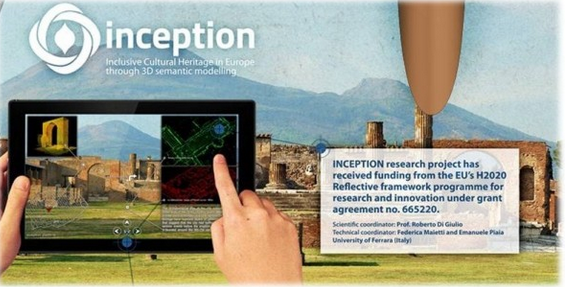Let me remind you that Europe features the most diverse, rich and numerous cultural heritage around the world. 609 million tourists visited the “old continent” by 2015 (29 million in 2014) according to the World Tourism Organization, and, although it is somewhat pretentious, it is suggested that 37% of these tourists are cultural tourists, a figure that grows by 15% each year. This “curious specie” wanders around the cities getting the urgent need to visit the built heritage and being actively involved in cultural events.
I agree on speaking about cultural heritage as a touristic resource is disappointing when heritage is properly identified as integrator item and a completely intangible social identifier, but also certainly is an economic resource and just making cash its sustainability is ensured. This is the way to fix and create thousands of jobs, which in turn reinforce the character of social backbone that heritage is by itself, even allowing to improve the citizens’ quality of life.

Because of this the public sector comes boosting the creation of more and more cultural attractions with the built heritage as backdrop. Cultural tourism is perceived as the main source for funding heritage preservation: tourists generate the resources needed for maintenance and restoration. Let’s see if this is really so in the coming years, since the Richards report, ensures there is a much higher offer than real demand right now.
Making sure the protection and the preservation of our built heritage is, today, more urgent than ever. Not only as “prey” of cultural tourism, and not only as a brand of territory (including citizens), but because of their vulnerability to pollution, climate change and socio-economic pressures. We all get sick from time to time and we know it is always better to prevent than cure. The same happens to the built heritage: it is as much desirable as important to have automated systems that continuously tell us how the built heritage is, preventing “ills” just before they are such as expensive as irreparable. It is somewhat comparable to doctor’s auscultation, but what do we need listening to? In the technical jargon we say “monitoring” and many types of sensors are used to, but three aspects are mainly registered:
- The temperature and relative humidity. Both are always linked (in fact they are inverse). Any kind of heritage building has greater or lesser water content in the air at a given temperature, having a decisive influence on the physical-chemical stability of the materials they are made of. Inadequate conditions of temperature and humidity produce deformation and rupture; rust and corrosion; as well as bio-deterioration (emergence of organisms).
- Natural and artificial lighting. the Sun, or electric sources are electromagnetic radiation mainly covering the ultraviolet (UV), visible (VIS) and infrared (IR) ranges. Together they cause photo-degradation (discoloration) and temperature increases, especially in the case of organic materials (paintings, textiles, books and documents).
- Pollutants. The air composition and quality are altered by compounds that mostly come from the use of fossil fuels (road traffic, heating of buildings and industrial activities). These compounds are able to make chemical reactions that affect the materials causing corrosion; spots and coatings; and also bio-deterioration.
These parameters will be particularly broken in subsequent posts.

In any case, the role of technological centres as CARTIF is decisive to take step forward in the technical developments required so that monitoring can be done affordably and fully compatible with the aesthetics and functionality of the building. Relevant international projects on this regard where CARTIF is playing a major role are:
After Italy and recently China, Spain is the country that holds the largest number of human heritage sites. We are also a first order world tourist destination, with a yearly increasing cultural component. Playing at home, Castilla y León accounts for 60% of the Spanish heritage… Do we take the fingers out?
- Talking about everything visible and invisible (I) - 22 March 2024
- What does decarbonization have to do with Cultural Heritage? - 24 November 2023
- If you own an old sculpture or painting, take it to the dermatologist - 24 February 2023

